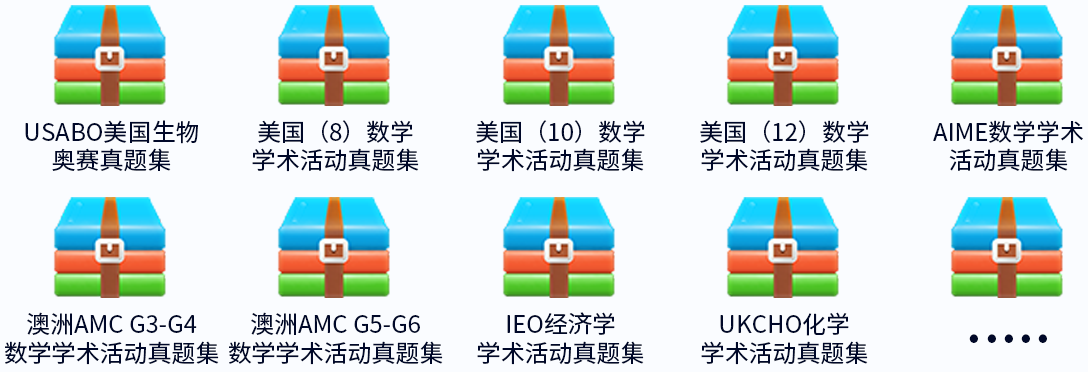- 翰林提供学术活动、国际课程、科研项目一站式留学背景提升服务!
- 400 888 0080
2002AIME II真题及答案解析
2002AIME II真题及答案解析
答案解析请参考文末
Problem 1
Given that ![]() and
and ![]() are both integers between
are both integers between ![]() and
and ![]() , inclusive;
, inclusive; ![]() is the number formed by reversing the digits of
is the number formed by reversing the digits of ![]() ; and
; and ![]() . How many distinct values of
. How many distinct values of ![]() are possible?
are possible?
Problem 2
Three vertices of a cube are ![]() ,
, ![]() , and
, and ![]() . What is the surface area of the cube?
. What is the surface area of the cube?
Problem 3
It is given that ![]() , where
, where ![]() ,
, ![]() , and
, and ![]() are positive integers that form an increasing geometric sequence and
are positive integers that form an increasing geometric sequence and ![]() is the square of an integer. Find
is the square of an integer. Find ![]() .
.
Problem 4
Patio blocks that are hexagons ![]() unit on a side are used to outline a garden by placing the blocks edge to edge with
unit on a side are used to outline a garden by placing the blocks edge to edge with ![]() on each side. The diagram indicates the path of blocks around the garden when
on each side. The diagram indicates the path of blocks around the garden when ![]() .
.

If ![]() , then the area of the garden enclosed by the path, not including the path itself, is
, then the area of the garden enclosed by the path, not including the path itself, is ![]() square units, where
square units, where ![]() is a positive integer. Find the remainder when
is a positive integer. Find the remainder when ![]() is divided by
is divided by ![]() .
.
Problem 5
Find the sum of all positive integers ![]() where
where ![]() and
and ![]() are non-negative integers, for which
are non-negative integers, for which ![]() is not a divisor of
is not a divisor of ![]() .
.
Problem 6
Find the integer that is closest to  .
.
Problem 7
It is known that, for all positive integers ![]() ,
,
Problem 8
Find the least positive integer ![]() for which the equation
for which the equation ![]() has no integer solutions for
has no integer solutions for ![]() . (The notation
. (The notation ![]() means the greatest integer less than or equal to
means the greatest integer less than or equal to ![]() .)
.)
Problem 9
Let ![]() be the set
be the set ![]() Let
Let ![]() be the number of sets of two non-empty disjoint subsets of
be the number of sets of two non-empty disjoint subsets of ![]() . (Disjoint sets are defined as sets that have no common elements.) Find the remainder obtained when
. (Disjoint sets are defined as sets that have no common elements.) Find the remainder obtained when ![]() is divided by
is divided by ![]() .
.
Problem 10
While finding the sine of a certain angle, an absent-minded professor failed to notice that his calculator was not in the correct angular mode. He was lucky to get the right answer. The two least positive real values of ![]() for which the sine of
for which the sine of ![]() degrees is the same as the sine of
degrees is the same as the sine of ![]() radians are
radians are ![]() and
and ![]() , where
, where ![]() ,
, ![]() ,
, ![]() , and
, and ![]() are positive integers. Find
are positive integers. Find ![]() .
.
Problem 11
Two distinct, real, infinite geometric series each have a sum of ![]() and have the same second term. The third term of one of the series is
and have the same second term. The third term of one of the series is ![]() , and the second term of both series can be written in the form
, and the second term of both series can be written in the form ![]() , where
, where ![]() ,
, ![]() , and
, and ![]() are positive integers and
are positive integers and ![]() is not divisible by the square of any prime. Find
is not divisible by the square of any prime. Find ![]() .
.
Problem 12
A basketball player has a constant probability of ![]() of making any given shot, independent of previous shots. Let
of making any given shot, independent of previous shots. Let ![]() be the ratio of shots made to shots attempted after
be the ratio of shots made to shots attempted after ![]() shots. The probability that
shots. The probability that ![]() and
and ![]() for all
for all ![]() such that
such that ![]() is given to be
is given to be ![]() where
where ![]() ,
, ![]() ,
, ![]() , and
, and ![]() are primes, and
are primes, and ![]() ,
, ![]() , and
, and ![]() are positive integers. Find
are positive integers. Find ![]() .
.
Problem 13
In triangle ![]() , point
, point ![]() is on
is on ![]() with
with ![]() and
and ![]() , point
, point ![]() is on
is on ![]() with
with ![]() and
and ![]() ,
, ![]() , and
, and ![]() and
and ![]() intersect at
intersect at ![]() . Points
. Points ![]() and
and ![]() lie on
lie on ![]() so that
so that ![]() is parallel to
is parallel to ![]() and
and ![]() is parallel to
is parallel to ![]() . It is given that the ratio of the area of triangle
. It is given that the ratio of the area of triangle ![]() to the area of triangle
to the area of triangle ![]() is
is ![]() , where
, where ![]() and
and ![]() are relatively prime positive integers. Find
are relatively prime positive integers. Find ![]() .
.
Problem 14
The perimeter of triangle ![]() is
is ![]() , and the angle
, and the angle ![]() is a right angle. A circle of radius
is a right angle. A circle of radius ![]() with center
with center ![]() on
on ![]() is drawn so that it is tangent to
is drawn so that it is tangent to ![]() and
and ![]() . Given that
. Given that ![]() where
where ![]() and
and ![]() are relatively prime positive integers, find
are relatively prime positive integers, find ![]() .
.
Problem 15
Circles ![]() and
and ![]() intersect at two points, one of which is
intersect at two points, one of which is ![]() , and the product of the radii is
, and the product of the radii is ![]() . The x-axis and the line
. The x-axis and the line ![]() , where
, where ![]() , are tangent to both circles. It is given that
, are tangent to both circles. It is given that ![]() can be written in the form
can be written in the form ![]() , where
, where ![]() ,
, ![]() , and
, and ![]() are positive integers,
are positive integers, ![]() is not divisible by the square of any prime, and
is not divisible by the square of any prime, and ![]() and
and ![]() are relatively prime. Find
are relatively prime. Find ![]() .
.
2002AIME II详细解析
- We express the numbers as
 and
and  . From this, we have
. From this, we have Because
Because  and
and  are digits, and
are digits, and  and
and  are both between 1 and 9 (from condition 1), there are
are both between 1 and 9 (from condition 1), there are  possible values (since all digits except
possible values (since all digits except  can be expressed this way).
can be expressed this way). 

 So,
So,  is an equilateral triangle. Let the side of the cube be
is an equilateral triangle. Let the side of the cube be  .
.
So,
 , and hence the surface area is
, and hence the surface area is  .
. . Since they form an increasing geometric sequence,
. Since they form an increasing geometric sequence,  is the geometric mean of the product
is the geometric mean of the product  .
. ![$b=sqrt[3]{abc}=6^2=36$](https://latex.artofproblemsolving.com/8/7/f/87ffcb66a32127aa794a8e3f2db141b6fe092d09.png) .Since
.Since  is the square of an integer, we can find a few values of
is the square of an integer, we can find a few values of  that work:
that work:  and
and  . Out of these, the only value of
. Out of these, the only value of  that works is
that works is  , from which we can deduce that
, from which we can deduce that  .Thus,
.Thus, 
- When
 , the path of blocks has
, the path of blocks has  blocks total in it. When
blocks total in it. When  , there is just one lonely block. Thus, the area of the garden enclosed by the path when
, there is just one lonely block. Thus, the area of the garden enclosed by the path when  is
is![[(1+6+12+18+cdots +1200)A=(1+6(1+2+3...+200))A]](https://latex.artofproblemsolving.com/e/c/a/ecad98b857944eb31fe872e4829687a8ce265342.png) ,where
,where  is the area of one block. Then, because
is the area of one block. Then, because  is equal to the sum of the first
is equal to the sum of the first  integers:
integers:![[(1+6(1+2+3...+200))=(1+6((200)(201)/2))A=120601A]](https://latex.artofproblemsolving.com/2/3/1/2319ef0a32ca4887a6f58234c250d5689530db33.png) .Since
.Since  , the area of the garden is
, the area of the garden is
![[120601cdot dfrac{3sqrt{3}}{2}=dfrac{361803sqrt{3}}{2}]](https://latex.artofproblemsolving.com/1/2/8/1283821e2343826447216d84e3c55534912c388c.png) .
. ,
,  Remainder
Remainder  .
. - Substitute
 into
into  and
and  , and find all pairs of non-negative integers (n,m) for which
, and find all pairs of non-negative integers (n,m) for which  is not a divisor of
is not a divisor of  Simplifying both expressions:
Simplifying both expressions: is not a divisor of
is not a divisor of  Comparing both exponents (noting that there must be either extra powers of 2 or extra powers of 3 in the left expression):
Comparing both exponents (noting that there must be either extra powers of 2 or extra powers of 3 in the left expression): OR
OR 
Using the first inequality
 and going case by case starting with n
and going case by case starting with n  {0, 1, 2, 3...}:
{0, 1, 2, 3...}:n=0:
 which has no solution for non-negative integers m
which has no solution for non-negative integers mn=1:
 which is true for m=0 but fails for higher integers
which is true for m=0 but fails for higher integers 
n=2:
 which is true for m=0 but fails for higher integers
which is true for m=0 but fails for higher integers 
n=3:
 which is true for m=0 but fails for higher integers
which is true for m=0 but fails for higher integers 
n=4:
 which is true for m=0 but fails for higher integers
which is true for m=0 but fails for higher integers 
n=5:
 which has no solution for non-negative integers m
which has no solution for non-negative integers mThere are no more solutions for higher
 , as polynomials like
, as polynomials like  grow slower than exponentials like
grow slower than exponentials like  .
.Using the second inequality
 and going case by case starting with m
and going case by case starting with m  {0, 1, 2, 3...}:
{0, 1, 2, 3...}:m=0:
 which has no solution for non-negative integers n
which has no solution for non-negative integers nm=1:
 which is true for n=0 but fails for higher integers
which is true for n=0 but fails for higher integers 
m=2:
 which is true for n=0 but fails for higher integers
which is true for n=0 but fails for higher integers 
m=3:
 which has no solution for non-negative integers n
which has no solution for non-negative integers nThere are no more solutions for higher
 , as polynomials like
, as polynomials like  grow slower than exponentials like
grow slower than exponentials like  .
.Thus there are six numbers corresponding to (1,0), (2,0), (3,0), (4,0), (0,1), and (0,2). Plugging them back into the original expression, these numbers are 2, 4, 8, 16, 3, and 9, respectively. Their sum is
 .
. - We know that
 .So if we pull the
.So if we pull the  out of the summation, you get
out of the summation, you get .Now that telescopes, leaving you with:
.Now that telescopes, leaving you with:
The small fractional terms are not enough to bring
 lower than
lower than  so the answer is
so the answer is 
If you didn't know
 , here's how you can find it out:
, here's how you can find it out:We know
 . We can use the process of fractional decomposition to split this into two fractions thus:
. We can use the process of fractional decomposition to split this into two fractions thus:  for some A and B.
for some A and B.Solving for A and B gives
 or
or  . Since there is no n term on the left hand side,
. Since there is no n term on the left hand side,  and by inspection
and by inspection  . Solving yields
. Solving yields 
Then we have
 and we can continue as before.
and we can continue as before.  is a multiple of
is a multiple of  if
if  is a multiple of
is a multiple of  . So
. So  .Since
.Since  is always odd, and only one of
is always odd, and only one of  and
and  is even, either
is even, either  .Thus,
.Thus,  .If
.If  , then
, then  . If
. If  , then
, then  . If
. If  , then
, then  .Thus, there are no restrictions on
.Thus, there are no restrictions on  in
in  .
.
It is easy to see that only one of
 ,
,  , and
, and  is divisible by
is divisible by  . So either
. So either  .
.Thus,
 .
.From the Chinese Remainder Theorem,
 . Thus, the smallest positive integer
. Thus, the smallest positive integer  is
is  .
.- Note that if
 , then either
, then either  , or
, or  . Either way, we won't skip any natural numbers.The greatest
. Either way, we won't skip any natural numbers.The greatest  such that
such that  is
is  . (The inequality simplifies to
. (The inequality simplifies to  , which is easy to solve by trial, as the solution is obviously
, which is easy to solve by trial, as the solution is obviously  .)We can now compute:
.)We can now compute:![[leftlfloorfrac{2002}{45}rightrfloor=44]](https://latex.artofproblemsolving.com/6/3/b/63b7ebc5dc5cf733c56ba067b3a0e471f2930a3a.png)
![[leftlfloorfrac{2002}{44}rightrfloor=45]](https://latex.artofproblemsolving.com/9/6/4/9645b62aba16644838a82c2b030071bd4b0fe59f.png)
![[leftlfloorfrac{2002}{43}rightrfloor=46]](https://latex.artofproblemsolving.com/b/2/d/b2df80ec34aa1281c7dacdce0e5d844b05ab5a7e.png)
![[leftlfloorfrac{2002}{42}rightrfloor=47]](https://latex.artofproblemsolving.com/c/f/e/cfe815b974705fc82acc6f64d75abcf1825885fc.png)
![[leftlfloorfrac{2002}{41}rightrfloor=48]](https://latex.artofproblemsolving.com/3/b/f/3bff94498722646821072a895ce74e7da4b6f534.png)
![[leftlfloorfrac{2002}{40}rightrfloor=50]](https://latex.artofproblemsolving.com/6/3/a/63a7f66c9af8f3ac644c1de52da4665777f7b460.png) From the observation above (and the fact that
From the observation above (and the fact that  ) we know that all integers between
) we know that all integers between  and
and  will be achieved for some values of
will be achieved for some values of  . Similarly, for
. Similarly, for  we obviously have
we obviously have  .Hence the least positive integer
.Hence the least positive integer  for which the equation
for which the equation  has no integer solutions for
has no integer solutions for  is
is  .
. - Let the two disjoint subsets be
 and
and  , and let
, and let  . For each
. For each  , either
, either  ,
,  , or
, or  . So there are
. So there are  ways to organize the elements of
ways to organize the elements of  into disjoint
into disjoint  ,
,  , and
, and  .However, there are
.However, there are  ways to organize the elements of
ways to organize the elements of  such that
such that  and
and  , and there are
, and there are  ways to organize the elements of
ways to organize the elements of  such that
such that  and
and  . But, the combination such that
. But, the combination such that  and
and  is counted twice.Thus, there are
is counted twice.Thus, there are  ordered pairs of sets
ordered pairs of sets  . But since the question asks for the number of unordered sets
. But since the question asks for the number of unordered sets  ,
,  .
. - Note that
 degrees is equal to
degrees is equal to  radians. Also, for
radians. Also, for ![$alpha in left[0 , frac{pi}{2} right]$](https://latex.artofproblemsolving.com/6/f/e/6fef714128e717f65d8c5a0f447c3279d59ff2ad.png) , the two least positive angles
, the two least positive angles  such that
such that  are
are  , and
, and  .Clearly
.Clearly  for positive real values of
for positive real values of  .
. yields:
yields:  .
. yields:
yields:  .So,
.So,  .
. - Let the second term of each series be
 . Then, the common ratio is
. Then, the common ratio is  , and the first term is
, and the first term is  .So, the sum is
.So, the sum is  . Thus,
. Thus,  .The only solution in the appropriate form is
.The only solution in the appropriate form is  . Therefore,
. Therefore,  .
. - The first restriction is that
 , meaning that the player gets exactly 4 out of 10 baskets. The second restriction is
, meaning that the player gets exactly 4 out of 10 baskets. The second restriction is  . This means that the player may never have a shooting average over 40%. Thus, the first and second shots must fail, since
. This means that the player may never have a shooting average over 40%. Thus, the first and second shots must fail, since  and
and  are both over
are both over  , but the player may make the third basket, since
, but the player may make the third basket, since  In other words, the earliest the first basket may be made is attempt 3. Using similar reasoning, the earliest the second basket may be made is attempt 5, the earliest the third basket may be made is attempt 8, and the earliest the fourth basket may be made is attempt 10.Using X to represent a basket and O to represent a failure, this 'earliest' solution may be represented as:OOXOXOOXOXTo simplify counting, note that the first, second, and tenth shots are predetermined. The first two shots must fail, and the last shot must succeed. Thus, only slots 3-9 need to be counted, and can be abbreviated as follows:XOXOOXO
In other words, the earliest the first basket may be made is attempt 3. Using similar reasoning, the earliest the second basket may be made is attempt 5, the earliest the third basket may be made is attempt 8, and the earliest the fourth basket may be made is attempt 10.Using X to represent a basket and O to represent a failure, this 'earliest' solution may be represented as:OOXOXOOXOXTo simplify counting, note that the first, second, and tenth shots are predetermined. The first two shots must fail, and the last shot must succeed. Thus, only slots 3-9 need to be counted, and can be abbreviated as follows:XOXOOXO
The problem may be separated into five cases, since the first shot may be made on attempt 3, 4, 5, 6, or 7. The easiest way to count the problem is to remember that each X may slide to the right, but NOT to the left.
First shot made on attempt 3:
XOXOOXO
XOXOOOX
XOOXOXO
XOOXOOX
XOOOXXO
XOOOXOX
XOOOOXX
Total - 7
First shot made on attempt 4:
Note that all that needs to be done is change each line in the prior case from starting with "XO....." to "OX.....".
Total - 7
First shot made on attempt 5:
OOXXOXO
OOXXOOX
OOXOXXO
OOXOXOX
OOXOOXX
Total - 5
First shot made on attempt 6:
OOOXXXO
OOOXXOX
OOOXOXX
Total - 3
First shot made on attempt 7:
OOOOXXX
Total - 1
The total number of ways the player may satisfy the requirements is
 .
.The chance of hitting any individual combination (say, for example, OOOOOOXXXX) is

Thus, the chance of hitting any of these 23 combinations is

Thus, the final answer is

- Let
 be the intersection of
be the intersection of  and
and  .
.![[asy] size(10cm); pair A,B,C,D,E,X,P,Q,R; A=(0,0); B=(8,0); C=(1.9375,3.4994); D=(3.6696,2.4996); E=(1.4531,2.6246); X=(4.3636,0); P=(2.9639,2.0189); Q=(1.8462,0); R=(6.4615,0); dot(A); dot(B); dot(C); dot(D); dot(E); dot(X); dot(P); dot(Q); dot(R); label("$A$",A,WSW); label("$B$",B,ESE); label("$C$",C,NNW); label("$D$",D,NE); label("$E$",E,WNW); label("$X$",X,SSE); label("$P$",P,NNE); label("$Q$",Q,SSW); label("$R$",R,SE); draw(A--B--C--cycle); draw(P--Q--R--cycle); draw(A--D); draw(B--E); draw(C--X); [/asy]](https://latex.artofproblemsolving.com/8/0/c/80cb201b82c2eba8e77d9c24762c711241cdc747.png) Since
Since  and
and  ,
,  and
and  . So
. So  , and thus,
, and thus, ![$frac{[Delta PQR]}{[Delta ABC]} = left(frac{PX}{CX}right)^2$](https://latex.artofproblemsolving.com/3/5/2/352a6af9dae8b903b38cc5804c7fa1542beba213.png) .Using mass points:WLOG, let
.Using mass points:WLOG, let  .
.
Then:
 .
. .
. .
. .
.Thus,
 . Therefore,
. Therefore, ![$frac{[Delta PQR]}{[Delta ABC]} = left( frac{15}{26} right)^2 = frac{225}{676}$](https://latex.artofproblemsolving.com/f/e/1/fe19d6a0d5fbe59e32ef8e5b21f0cada393f555a.png) , and
, and  .
. - Let the circle intersect
 at
at  . Then note
. Then note  and
and  are similar. Also note that
are similar. Also note that  by power of a point. So we have
by power of a point. So we have![[frac{19}{AM} = frac{152-2AM}{152}]](https://latex.artofproblemsolving.com/a/6/0/a60315140ef1b249f249f56e6ac9ca7af9cc2562.png) Solving,
Solving,  . So the ratio of the side lengths of the triangles is 2. Therefore,
. So the ratio of the side lengths of the triangles is 2. Therefore,![[frac{PB+38}{OP}= 2 text{ and } frac{OP+19}{PB} = 2]](https://latex.artofproblemsolving.com/b/a/4/ba48eb05b5e743167842f148a2c8b89ce53c6a76.png) so
so  and
and  Substituting for
Substituting for  , we see that
, we see that  , so
, so  and the answer is
and the answer is  .
. - Let the smaller angle between the
 -axis and the line
-axis and the line  be
be  . Note that the centers of the two circles lie on the angle bisector of the angle between the
. Note that the centers of the two circles lie on the angle bisector of the angle between the  -axis and the line
-axis and the line  . Also note that if
. Also note that if  is on said angle bisector, we have that
is on said angle bisector, we have that  . Let
. Let  , for convenience. Therefore if
, for convenience. Therefore if  is on the angle bisector, then
is on the angle bisector, then  . Now let the centers of the two relevant circles be
. Now let the centers of the two relevant circles be  and
and  for some positive reals
for some positive reals  and
and  . These two circles are tangent to the
. These two circles are tangent to the  -axis, so the radii of the circles are
-axis, so the radii of the circles are  and
and  respectively. We know that the point
respectively. We know that the point  is a point on both circles, so we have that
is a point on both circles, so we have that![[(9-frac{a}{m_1})^2+(6-a)^2=a^2]](https://latex.artofproblemsolving.com/5/6/e/56e734ad9df559001a2f46e6070bd86711f508b3.png)
![[(9-frac{b}{m_1})^2+(6-b)^2=b^2]](https://latex.artofproblemsolving.com/3/e/b/3eba4c211d15bdc5b77751dbd0e9dbb91146579e.png) Expanding these and manipulating terms gives
Expanding these and manipulating terms gives![[frac{1}{m_1^2}a^2-[(18/m_1)+12]a+117=0]](https://latex.artofproblemsolving.com/6/5/9/6592b39b7ad5f75febbe24f4a7325f6f9d581861.png)
![[frac{1}{m_1^2}b^2-[(18/m_1)+12]b+117=0]](https://latex.artofproblemsolving.com/a/1/3/a13ebe1ce1593d0c6f6bf749361af116a047df1d.png)
It follows that
 and
and  are the roots of the quadratic
are the roots of the quadratic![[frac{1}{m_1^2}x^2-[(18/m_1)+12]x+117=0]](https://latex.artofproblemsolving.com/2/4/3/2438215e9dec2997ded29b5892b99d57a4093d3f.png)
It follows from Vieta's Formulas that the product of the roots of this quadratic is
 , but we were also given that the product of the radii was 68. Therefore
, but we were also given that the product of the radii was 68. Therefore  , or
, or  . Note that the half-angle formula for tangents is
. Note that the half-angle formula for tangents is![[tan{frac{theta}{2}}=sqrt{frac{1-cos{theta}}{1+cos{theta}}}]](https://latex.artofproblemsolving.com/f/4/d/f4dee17376f185dfda114ea91d413bd64bffe97b.png)
Therefore
![[frac{68}{117}=frac{1-cos{theta}}{1+cos{theta}}]](https://latex.artofproblemsolving.com/0/2/0/020cc128e9d389b92517fd142b2777b671a01b13.png)
Solving for
 gives that
gives that  . It then follows that
. It then follows that  .
.It then follows that
 . Therefore
. Therefore  ,
,  , and
, and  . The desired answer is then
. The desired answer is then  .
.
以上解析方式仅供参考
学术活动报名扫码了解!免费领取历年真题!

最新发布
© 2025. All Rights Reserved. 沪ICP备2023009024号-1









